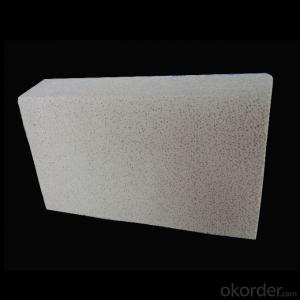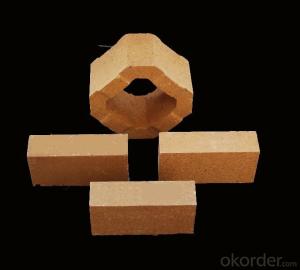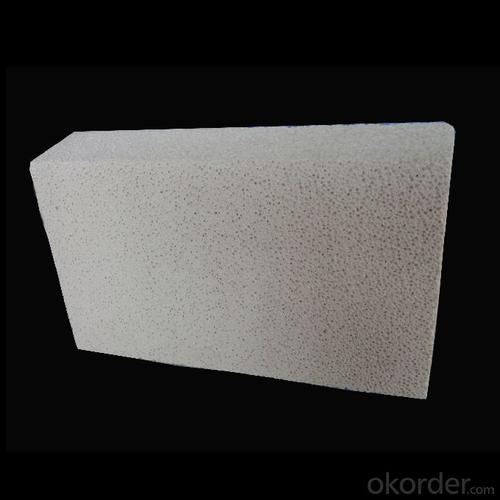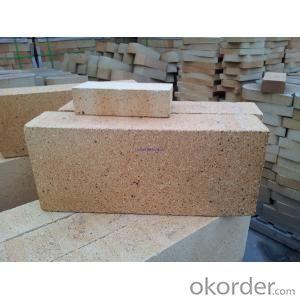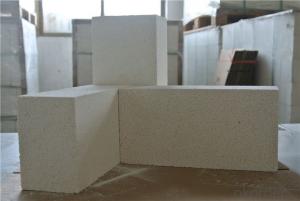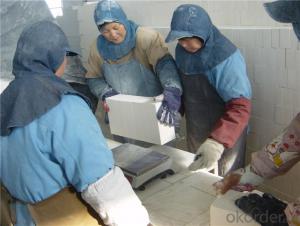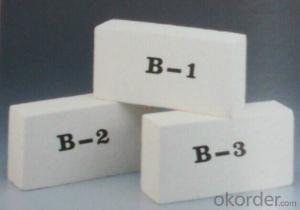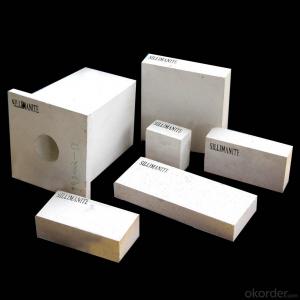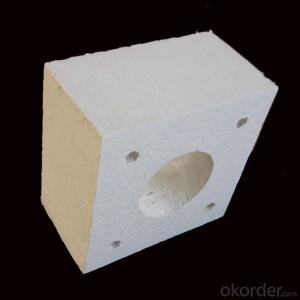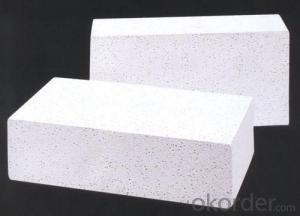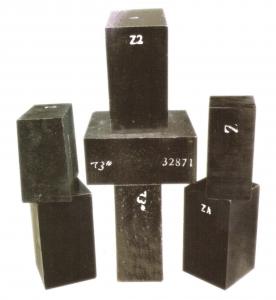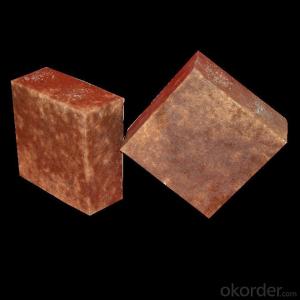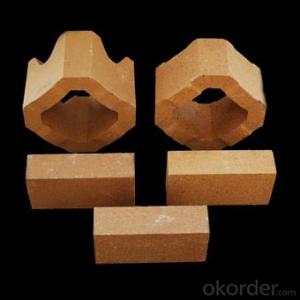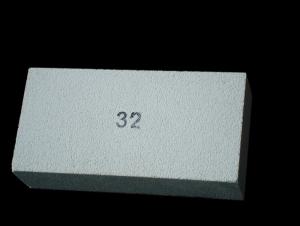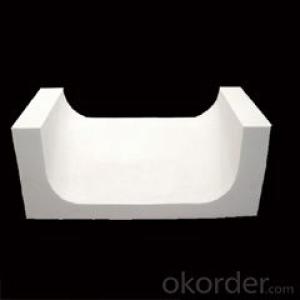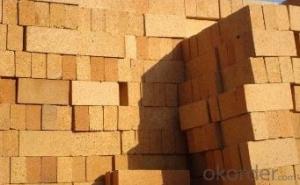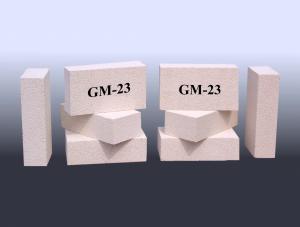Insulating Fire Brick - Refractory Aluminium Magnesium Carbon for Steel Ladle
- Loading Port:
- Shanghai
- Payment Terms:
- TT OR LC
- Min Order Qty:
- 10 m.t.
- Supply Capability:
- 100 m.t./month
OKorder Service Pledge
OKorder Financial Service
You Might Also Like
Quick Details
| Place of Origin: | (Mainland) | Shape: | Block | Material: | Alumina Cement |
| Al2O3 Content (%): | ≥60 | MgO Content (%): | ≥12 | Refractoriness (Degree): | 1770°< Refractoriness< 2000° |
| Model Number: | YH-AMC60 | Brand Name: | Bulk density: | ≥2.85 | |
| Apparent porosity: | ≤8 | C: | ≥6 | compressive strength: | ≥45 |
Packaging & Delivery
| Packaging Detail: | The refractory aluminium magnesium carbon insulating fire bricks for steel ladle is packed on wooden pallets with three layers water-proof shrink film and tightened with plastic/steel bandages,when in the transportation process,we should pay attention to moisture-proof and light handling. |
| Delivery Detail: | 7-15 working days |
Specifications
1.High temperature resistance&spalling resistance&anti erosion
2.Approved by SINOSTEEL
3.Premium service
4.ISO certificate
Refractory Aluminium Magnesium Carbon Insulating Fire Brick for Steel Ladle 
YH-AMC series refractory aluminium magnesium carbon insulating fire bricks for steel ladle are shaped by using top grade bauxite and corundum as aggregates and phenolic resin as binder and focusing on strengthen the matrix.It has the characteristics of corrosion resistance,spalling resistance,high strength,anti erosion and etc.,applicable to the ladle bottom and wall parts.
On the basis of Al-Mg-C Bricks,YH-MAC series magnesia alumina carbon bricks are strengthened the corrosion resistance and spalling resistance of materials by adjusting the process and technology,applicable to the ladle bottom,wall parts,etc.,to improve the ladle service life signigicantly.
Main Chemical Compositions and Physical Properties
| Items | Al-Mg-C Bricks | Mg-Al-C Bricks | |||||
| AMC-60 | AMC-65 | AMC-70 | AMC-75 | MAC-75 | MAC-75 | ||
| Chemical Compositions (%)≥ | MgO | 12 | 10 | 8 | 8 | 75 | 70 |
| Al2O3 | 60 | 65 | 70 | 75 | 10 | 15 | |
| C | 6 | 6 | 6 | 6 | 6 | 6 | |
| Apparent Porosity(%)≤ | 8 | 8 | 8 | 8 | 8 | 8 | |
| Bulk Density(g/cm³)≥ | 2.85 | 2.9 | 2.95 | 2.95 | 2.9 | 2.9 | |
| Compressives Strength(Mpa)≥ | 45 | 45 | 45 | 45 | 45 | 45 | |
Product Show of Refractory Aluminium Magnesium Carbon Insulating Fire Brick
Production Process of Refractory Aluminium Magnesium Carbon Insualting Fire Brick 
The production process of our refractory brick weather from the raw materials to the finished products inspection is strictly controled so that we can best service our client.laying solid foundation quality management to scientific and rational control system make high quality products.Scientific and rational control system is a prerequisite for the production of high quality refractories, Luoyang yuanhua matellurgical materials co., LTD always adhere to scientific and reasonable control to realize all-round control of production process, using the most advanced testing equipment and production equipment, strict quality control of raw materials to the finished product, put an end to the occurrence of unqualified products. In order to guarantee the high quality of the products, the company set up in the industry of advanced quality testing laboratory.
- Q: Are insulating fire bricks resistant to vermin infestation?
- Despite their excellent insulation properties and widespread usage in high-temperature applications like fireplaces or kilns, insulating fire bricks are not specifically engineered to resist vermin infestation. It should be noted that vermin, including rats or mice, can still infiltrate the minute gaps or crevices present between these bricks. Furthermore, if the bricks are composed of softer materials like ceramic fiber or lightweight refractory materials, vermin can even gnaw through them. To effectively prevent vermin infestation, it is crucial to implement additional measures such as using appropriate sealants or mortar to seal any gaps or cracks between the bricks. Furthermore, conducting regular inspections and maintenance is highly recommended to promptly identify and address any indications of vermin activity.
- Q: Can insulating fire bricks be used in the construction of BBQ pits?
- Yes, insulating fire bricks can be used in the construction of BBQ pits. These bricks are designed to withstand high temperatures and provide excellent insulation, making them ideal for creating a heat-resistant structure. They help to retain and distribute heat evenly, which is crucial for achieving optimal cooking conditions in a BBQ pit.
- Q: What are the different types of insulating fire bricks available?
- There are various types of insulating fire bricks available, each possessing unique characteristics and applications. Some of the most common types are: 1. Lightweight Insulating Fire Bricks (IFBs): These bricks consist of lightweight materials, such as expanded clay, perlite, or vermiculite, blended with a binder to create a porous structure. They offer exceptional insulation properties and find wide usage in applications where maintaining high temperatures is crucial, like in kilns or furnaces. 2. Mullite Insulating Fire Bricks: Mullite bricks are composed of a combination of alumina and silica, resulting in a material resistant to high temperatures. These bricks exhibit excellent thermal shock resistance and are frequently utilized in applications involving rapid heating and cooling cycles, such as in glass manufacturing or incinerators. 3. Alumina Insulating Fire Bricks: As the name suggests, these bricks are primarily made from alumina, which is highly resistant to high temperatures. They possess excellent thermal conductivity and are commonly employed in industries where maintaining high temperatures is essential, such as the iron and steel industry or ceramics production. 4. Silica Insulating Fire Bricks: Silica bricks are mainly composed of silica, a heat-resistant material. They exhibit exceptional thermal insulation properties and are commonly used in applications where maintaining high temperatures is necessary, like in the construction of kilns or furnaces. 5. Calcium Silicate Insulating Fire Bricks: These bricks are created by combining calcium silicate with other insulating materials. They possess excellent thermal insulation properties and are often employed in industries where maintaining high temperatures is crucial, such as the petrochemical industry or power plants. Ultimately, the choice of insulating fire brick depends on the specific requirements of the application, including temperature resistance, thermal conductivity, and thermal shock resistance. It is vital to select the appropriate type of insulating fire brick to ensure optimal performance and safety.
- Q: Are insulating fire bricks resistant to fluorine gas?
- Yes, insulating fire bricks are generally resistant to fluorine gas due to their refractory properties and ability to withstand high temperatures and chemical corrosion.
- Q: Can insulating fire bricks be used in ceramic kilns?
- Certainly, ceramic kilns can make use of insulating fire bricks. These bricks are specifically crafted to possess a minimal thermal conductivity, enabling them to better retain heat. Consequently, they prove to be an excellent option for lining the kiln walls, facilitating the conservation and uniform distribution of heat within the kiln chamber. Furthermore, these fire bricks are lightweight and possess exceptional resilience against thermal shock, rendering them highly durable and capable of withstanding the elevated temperatures commonly achieved in ceramic kilns.
- Q: Can insulating fire bricks be used in the construction of combustion chambers for rocket engines?
- Insulating fire bricks are capable of being utilized in the construction of rocket engine combustion chambers. They are specifically engineered to endure elevated temperatures and provide exceptional thermal insulation. This makes them an ideal option for situations involving extreme heat, such as rocket engine combustion chambers. The main purpose of insulating fire bricks in a rocket engine's combustion chamber is to shield the surrounding structure from the intense heat generated during combustion. By offering insulation, these bricks aid in minimizing the transfer of heat to the outer walls of the combustion chamber, thus averting damage and ensuring the chamber's structural integrity. Moreover, insulating fire bricks possess a lightweight composition and exhibit low thermal conductivity, enabling them to effectively retain heat within the combustion chamber. This characteristic is vital for maintaining optimal combustion efficiency and enhancing rocket performance. In addition to their thermal properties, insulating fire bricks are recognized for their durability and resistance to thermal shock. This attribute is particularly valuable in rocket engine applications where rapid temperature fluctuations can occur, such as during ignition or shutdown sequences. The ability of insulating fire bricks to endure such thermal stresses is imperative for the dependable operation and extended lifespan of the combustion chamber. Overall, insulating fire bricks are a suitable choice for constructing combustion chambers in rocket engines due to their ability to withstand high temperatures, provide thermal insulation, possess a lightweight nature, and exhibit durability.
- Q: How do insulating fire bricks help reduce heat loss through convection?
- Insulating fire bricks are specifically designed to minimize heat loss through convection. They achieve this by creating a barrier that prevents the movement of air and heat transfer. These bricks are made from lightweight refractory materials, which have low thermal conductivity. This means that they are not good conductors of heat and do not allow heat to easily pass through them. When these bricks are used in construction, they create a layer of insulation that effectively reduces heat transfer by convection. Convection is the process of heat transfer through the movement of air or fluid particles. The insulating fire bricks act as a barrier, preventing the free flow of air and interrupting the convective currents. The bricks are designed with small, interconnected air pockets or pores, which trap air inside them. These air pockets act as insulators and minimize the transfer of heat by convection. The trapped air forms a stagnant layer, reducing the movement of air and preventing the heat from escaping or entering the area. By reducing heat loss through convection, insulating fire bricks help to maintain a stable and comfortable temperature within a structure. They are commonly used in applications where heat insulation is essential, such as in industrial furnaces, kilns, and fireplaces. These bricks not only enhance energy efficiency by reducing heat loss but also contribute to fire safety by preventing the spread of heat to adjacent areas.
- Q: What is the bulk density of insulating bricks?
- National classification standard: water absorption rate of ceramic tile is less than or equal to 0.5%;
- Q: Can insulating fire bricks be used in a refractory lining?
- Yes, insulating fire bricks can be used in a refractory lining. Insulating fire bricks are made from lightweight materials and have high insulating properties, which make them suitable for use in refractory linings to reduce heat loss and improve energy efficiency.
- Q: Can insulating fire bricks be used in outdoor applications?
- Insulating fire bricks are specifically designed for high-temperature applications and are commonly used in indoor environments such as kilns, furnaces, and ovens. While they are not typically recommended for outdoor applications, there are certain circumstances where they can be used with caution. Insulating fire bricks are made from lightweight refractory materials that provide excellent insulation and heat resistance. However, they are not as durable or weather-resistant as other types of bricks, such as clay or concrete bricks, which are more suitable for outdoor use. In outdoor applications, insulating fire bricks may be exposed to harsh weather conditions, including rain, snow, extreme temperatures, and UV radiation, which can cause them to deteriorate and lose their insulating properties over time. Additionally, these bricks are more susceptible to cracking and damage due to thermal expansion and contraction caused by temperature fluctuations. If you need to use insulating fire bricks in an outdoor application, it is important to take extra precautions to protect them from the elements. This can include using weatherproof coatings or sealants to minimize water absorption and prevent damage from freezing and thawing cycles. It is also crucial to ensure proper drainage and ventilation to prevent moisture accumulation, as excessive moisture can compromise the insulation properties of these bricks. Overall, while insulating fire bricks can be used in outdoor applications under specific conditions, it is generally recommended to use more suitable materials for long-term durability and performance.
Send your message to us
Insulating Fire Brick - Refractory Aluminium Magnesium Carbon for Steel Ladle
- Loading Port:
- Shanghai
- Payment Terms:
- TT OR LC
- Min Order Qty:
- 10 m.t.
- Supply Capability:
- 100 m.t./month
OKorder Service Pledge
OKorder Financial Service
Similar products
Hot products
Hot Searches
Related keywords
